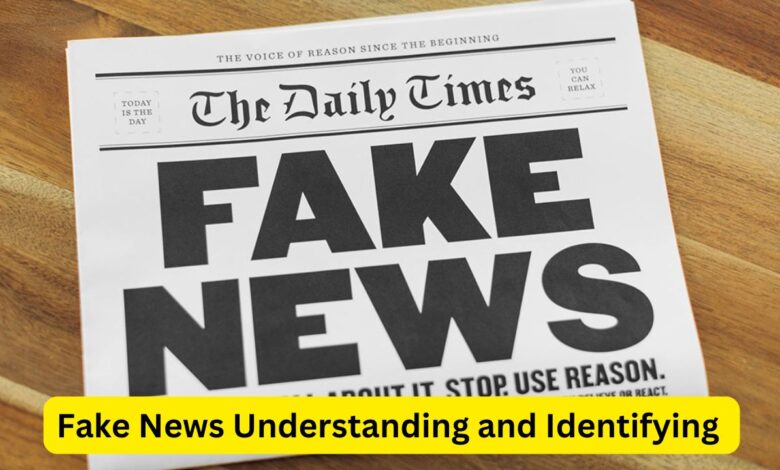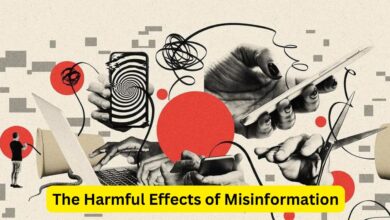Fake News Understanding and Identifying

In the digital age, fake news has emerged as a significant issue affecting global information landscapes. From social media platforms to news outlets, the proliferation of misinformation can have serious consequences for public opinion and decision-making. This comprehensive guide delves into the intricacies of identifying and combating fake news, providing essential strategies and tools to enhance your media literacy.
What is Fake News?
Fake news refers to false or misleading information presented as legitimate news. This content is designed to deceive readers and often aims to generate sensational headlines or drive political agendas. Understanding what constitutes fake news is crucial for developing effective strategies to combat it.
Types of Fake News
- Satire and Parody: Content that is intended to be humorous but can be misinterpreted as factual. For example, articles from “The Onion” are satire but may sometimes be shared as genuine news.
- Fabricated Content: Completely false information created to deceive. This might include fake stories about current events or entirely invented scenarios.
- Manipulated Content: Genuine information that has been altered to mislead. This can include edited images, videos, or out-of-context quotes.
- Imposter Content: News published under the guise of reputable sources. Fake websites or social media accounts can mimic real news organizations to lend credibility to false information.
Why Fake News is Dangerous
Fake news can have profound impacts on society, including:
- Eroding Trust: Repeated exposure to false information can undermine trust in legitimate news sources and institutions.
- Influencing Public Opinion: Fake news can shape political opinions and voting behaviors, leading to skewed democratic processes.
- Spreading Fear and Division: Misinformation can incite panic and create unnecessary division among different social groups.
Strategies to Identify Fake News
1. Verify the Source
Before accepting information as true, it’s essential to verify the credibility of the source. Trusted news organizations usually have rigorous editorial standards and fact-checking procedures. Check the following:
- Reputation: Is the source known for reliability and accuracy?
- Contact Information: Does the website provide clear contact details and information about the editorial team?
2. Check the Author’s Credentials
Investigate the author’s background and qualifications. Established journalists or experts in a field are more likely to provide accurate information. Look for:
- Professional Background: Is the author affiliated with reputable organizations or have a history of credible reporting?
- Previous Work: Has the author been involved in producing reliable content in the past?
3. Look for Supporting Evidence
A well-researched article should include references to credible sources, such as studies, official statements, or expert opinions. Assess the following:
- Citations: Are there links to primary sources or research studies?
- Evidence: Does the article provide concrete data or quotes from experts?
4. Analyze the Content for Bias
Assess whether the content displays bias or presents information in a one-sided manner. Look for:
- Language: Is the language emotive or designed to provoke a strong reaction?
- Balance: Does the article provide multiple viewpoints, or is it skewed towards a particular perspective?
5. Use Fact-Checking Tools
Several online tools and websites specialize in verifying the accuracy of information. These include:
- Snopes: A widely recognized fact-checking website that debunks myths and rumors.
- FactCheck.org: Provides in-depth analysis and verification of various claims.
- PolitiFact: Focuses on political statements and news to determine their truthfulness.
Practical Steps to Combat Fake News
1. Educate Yourself and Others
Awareness is the first step in combating fake news. Engage in media literacy programs and encourage others to do the same. Understanding how fake news operates can help you identify and avoid it.
2. Promote Critical Thinking
Encourage critical thinking by questioning the validity of information before sharing it. Ask yourself:
- Is this information logical and well-supported?
- Does it align with established facts and evidence?
3. Report Fake News
If you encounter fake news on social media platforms, use the reporting tools provided to alert the platform. This helps reduce the spread of misinformation and protects other users from being misled.
4. Support Reliable Sources
Contribute to the sustainability of reputable news sources by subscribing or donating. Supporting trustworthy journalism helps maintain the integrity of information available to the public.
The Role of Social Media in Spreading Fake News
Social media platforms have become fertile ground for the spread of fake news due to their vast reach and rapid dissemination capabilities. The algorithms that drive these platforms often prioritize sensational content, which can amplify misinformation and attract more engagement. To mitigate this, users should be cautious about sharing unverified information and critically evaluate the sources of the content they encounter. Additionally, social media companies are increasingly implementing measures such as fact-checking labels and content moderation to address the spread of misinformation. Staying informed about these tools and how they work can help users navigate social media more responsibly.
The Impact of Fake News on Mental Health
The constant bombardment of misinformation can have significant effects on mental health. Exposure to fake news can lead to increased anxiety, confusion, and stress, particularly when the content is designed to provoke emotional responses. The spread of false information can also contribute to a sense of helplessness and mistrust in media sources, further exacerbating mental health challenges. It is important to maintain a balanced media diet and engage in activities that promote mental well-being, such as taking breaks from news consumption and practicing mindfulness.
Legal and Ethical Considerations in Addressing Fake News
Addressing fake news involves navigating complex legal and ethical considerations. On one hand, there is a need to uphold freedom of speech and avoid censorship. On the other hand, there are concerns about the legal responsibility of platforms and individuals who propagate false information. Laws and regulations regarding misinformation vary by country, with some implementing stricter measures than others. Ethically, media organizations and individuals have a responsibility to promote accuracy and integrity in their reporting. Understanding the legal frameworks and ethical guidelines surrounding fake news can help inform more responsible practices and policies.
The Future of Fake News and Information Literacy
As technology evolves, so too does the sophistication of fake news tactics. The future will likely see the continued development of deepfakes, AI-generated content, and other advanced methods of misinformation. To combat these emerging threats, it is crucial to enhance information literacy and promote ongoing education about digital media. Schools, organizations, and communities should invest in programs that teach critical thinking and digital skills to better equip individuals to recognize and respond to fake news. By staying proactive and informed, we can collectively work towards a more truthful and transparent information landscape.
Conclusion
The fight against fake news requires vigilance, education, and critical thinking. By understanding the nature of fake news and employing effective strategies to identify and counter it, we can contribute to a more informed and trustworthy information environment.





One Comment